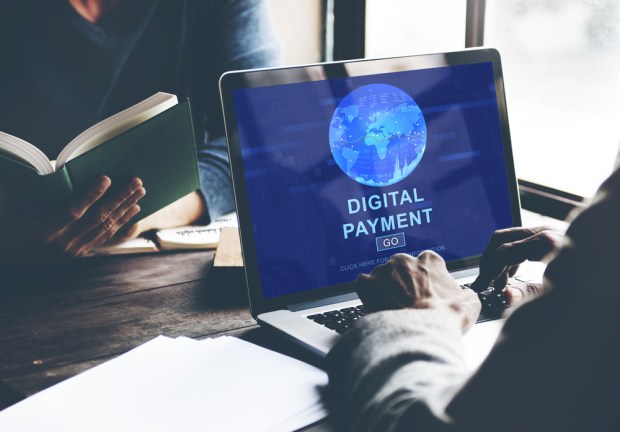How To Get SMEs To Switch From Checks To ACH

Through its integration with QuickBooks Online, Bill.com says it wants to help SMEs begin paying bills electronically. So why has it included capabilities for SMEs to send paper checks? Sanjeev Kriplani, SVP Marketing & Product Management at Bill.com, tells PYMNTS there’s a good reason for that — and it isn’t to perpetuate what remains the most common B2B payment rail.
QuickBooks Online touts itself as a leader in SME accounting. Last year, Intuit announced that QuickBooks Online surpassed the 1.5 million user mark — not just a sign of corporate growth, the company said, but also an indication of how small businesses are adopting the cloud and other digital solutions.
But there’s a catch: While small businesses can manage their finances digitally in QuickBooks Online, they couldn’t, until recently, make electronic payments within the platform.
Sanjeev Kriplani, SVP Marketing and Product Management at Bill.com, likened this to “QuickBooks Online — plus paper.”
That was the motivation on QuickBooks’ part to partner with Bill.com, Kriplani recently told PYMNTS, and integrate electronic B2B payment capabilities into its solution — a feature announced earlier this week.
There’s another catch, though: While Bill.com facilitates ACH payments, it also announced news that it would support paper check payments made by SMEs by producing and mailing out checks to payees on behalf of SME users.
Part of that may be because paper checks are still so common among small businesses that payment service providers simply can’t afford to neglect SME demand for the rail.
A recent survey from NACHA released earlier this week found that today, accounts receivables executives said paper checks make up about half of the payments they receive (compared to ACH, which accounts for about a third).
Kriplani said that checks are even more popular among small companies.
“If you look at the world of payments, consumer payments have largely shifted to electronic, large enterprises have largely shifted to electronic and small businesses have been left behind,” he said. “They’re still paying with check.”
One reason for this, he said, is that the “market-leading accounting software doesn’t allow you to pay electronically.” In other words, when a solution as common as QuickBooks Online doesn’t support electronic bill payment, then naturally SMEs aren’t going to electronically pay bills.
Further, he said, SMEs’ banks don’t support electronic payments either, because online banking platforms don’t provide the necessary features small business owners need.
“I want remittance information to be moved with the payment, to be able to say that this payment is for invoice #1234,” he explained. “Online banking bill pay interfaces don’t make that easy.”
These factors would suggest that the financial services market is, in some ways, working against SME adoption of electronic payments, despite consumers and enterprises largely able to latch onto the trend.
“If you’re a small business, when you go into the accounting software and you don’t see electronic payments and when you go to your bank but that doesn’t work very well, paper starts to look pretty good,” Kriplani said, adding that many vendors don’t even want to be paid electronically.
So that brings us to our earlier catch: If Bill.com wants SMEs to get off paper, why have they included paper check payment capabilities with the latest integration of QuickBooks Online? It’s not to feed into SMEs’ dependence on paper, Kriplani explained. Instead, Bill.com has witnessed a phenomenon where SMEs may start off using checks, but with easy access to ACH payments, they eventually make the transition.
“What we find is that, when businesses get on the Bill.com system, they start out using checks for about 95 percent of payments,” he said. “Within six to nine months on the system, they move to about 50-plus percent ACH payments.”
Indeed, NACHA’s survey found that accounts receivables professionals anticipate that in only three years, ACH will surpass checks as the top method by which they get paid. The analysis predicted ACH will account for 45 percent of B2B payments by 2020, while checks will decline to 34 percent.
For small businesses specifically, that transition may take longer, or may not.
“We do believe ACH payments will replace checks, and, in fact, they already have among large businesses,” Kriplani explained. “Large businesses pay most of their payments via ACH, with some checks. For small businesses, it’s the other way around.”
But when online systems that provide digital accounting and financial management solutions support electronic payments, SMEs may feel more inclined to gradually let go of checks in favor of ACH.
Interestingly, the executive explained that there doesn’t seem to be much of a need to support card payments within these systems. While smaller vendors are weary to take on transaction fees, larger companies that accept card payments from SMEs already have a mechanism to facilitate payments, he said.
“There are a lot of large companies that accept card payments from small businesses, for example, when you’re buying from Staples or Amazon,” he noted. “Typically, a small business will have a card in their account on Staples or Amazon, and the small business will download card charges into their accounting software. That process works today, and there’s no real need for an intervention.”
In terms of faster payments, Kriplani said he does see potential for initiatives like Same Day ACH in the SME payments world, but there’s work to be done first.
“There will absolutely be demand for faster ACH payments,” he said. “And as a player in the industry, we’ll be supporting that overtime. But in the particular case of small businesses, the first thing to do, really, is get them to move from checks to ACH … as we make that [transition], then yes, the next step is to make ACH faster.”
